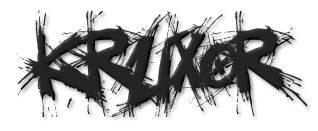element()
Quick Summary for element()
Check the Browser compatibility table carefully before using this in production.
Code Usage for element()
element(id) More Details for element()
element()
Experimental: This is an experimental technologyCheck the Browser compatibility table carefully before using this in production.
The element() CSS function defines an <image> value generated from an arbitrary HTML element. This image is live, meaning that if the HTML element is changed, the CSS properties using the resulting value are automatically updated.
A particularly useful scenario for using this would be to render an image in an HTML <canvas> element, then use that as a background.
On Gecko browsers, you can use the non-standard document.mozSetImageElement() method to change the element being used as the background for a given CSS background element.
Syntax
element(id) where:
idThe ID of an element to use as the background, specified using the HTML attribute #id on the element.
Examples
These examples work in builds of Firefox that support -moz-element().
A somewhat realistic example
This example uses a hidden <div> as a background. The background element uses a gradient, but also includes text that is rendered as part of the background.
<div style="width:400px; height:400px; background:-moz-element(#myBackground1) no-repeat;"> <p>This box uses the element with the #myBackground1 ID as its background!</p> </div> <div style="overflow:hidden; height:0;"> <div id="myBackground1" style="width:1024px; height:1024px; background-image: linear-gradient(to right, red, orange, yellow, white);"> <p style="transform-origin:0 0; transform: rotate(45deg); color:white;">This text is part of the background. Cool, huh?</p> </div> </div> The <div> element with the ID "myBackground1" is used as the background for the content including the paragraph "This box uses the element with the #myBackground1 ID as its background!".
Page Preview
This example based on Vincent De Oliveira's creates a preview of the <div id="css-source"> inside <div id="css-result">.
<div id="css-source"> <h1>Page Preview</h1> </div> <div id="css-result"> </div> #css-result { background: -moz-element(#css-source) no-repeat; width: 256px; height: 32px; background-size: 80%; border: dashed; } Specifications
| Specification |
|---|
| CSS Image Values and Replaced Content Module Level 4 # element-notation |
See also
image() image-set() <image> <gradient> element() cross-fade() document.mozSetImageElement() Last modified: Feb 9, 2022, by MDN contributors
Select your preferred language English (US)Français日本語Português (do Brasil)中文 (简体) Change language

